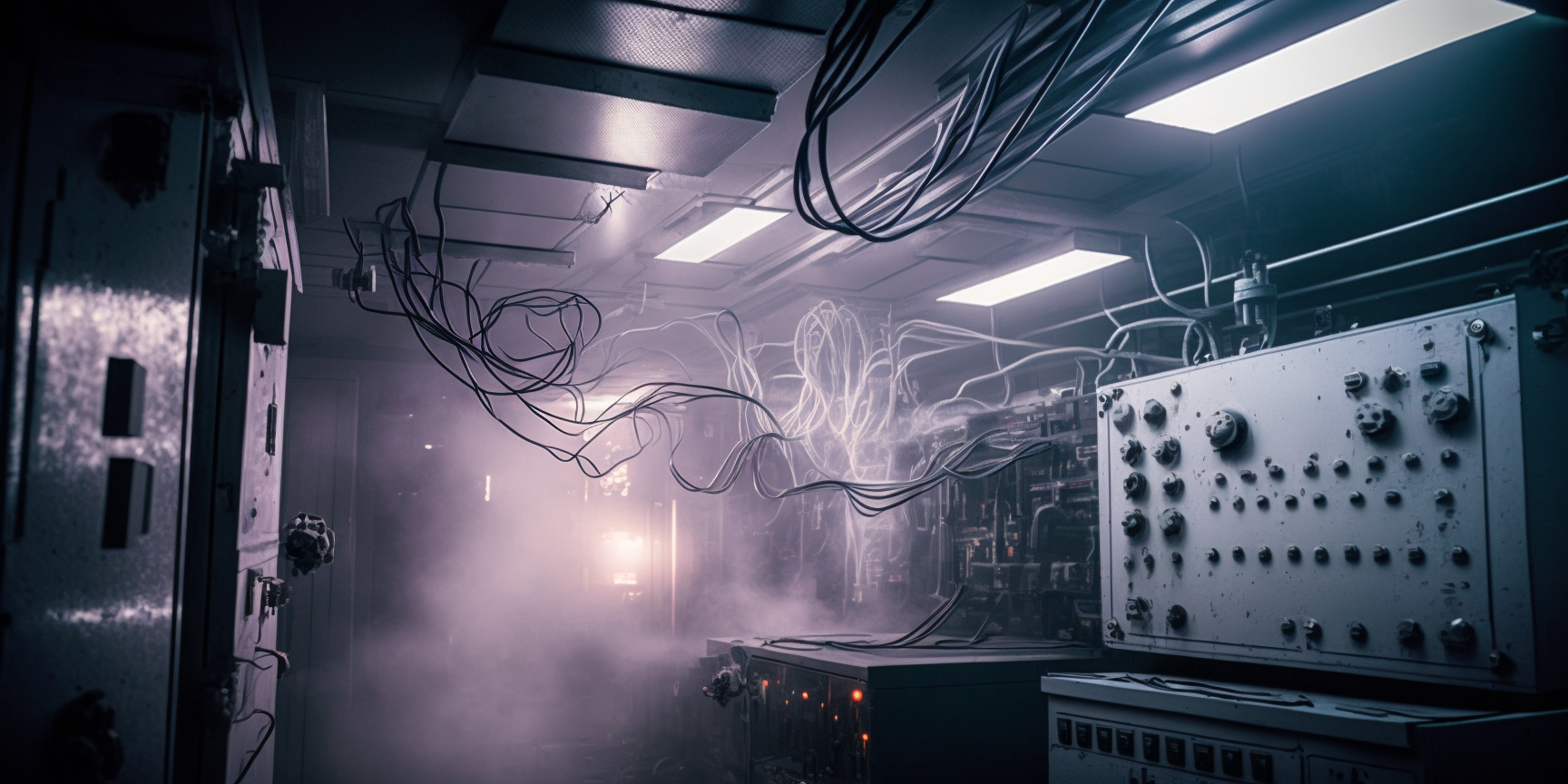What is Electrical Room Fire Suppression Systems?
Electrical Room Fire Suppression Systems are a critical component of fire safety in commercial and industrial settings. They provide an automated, targeted fire suppression solution designed to quickly detect and respond to electrical fires as soon as they start. These systems detect smoke or heat buildup in electrical rooms or enclosures independently of the building’s main smoke detection system, providing an extra layer of protection for vital equipment and personnel.
When activated, the suppression system deploys a specialized agent that is designed to quickly suppress electrical fires while leaving other areas unaffected. These systems often include a mechanical damper system that prevents toxic gasses from spreading throughout the building, ensuring maximum containment and protection against fire damage. These systems often include advanced features such as remote monitoring capabilities and access control to ensure proper maintenance and prevent tampering.
Overall, Electrical Room Fire Suppression Systems are invaluable tools for protecting property and personnel in commercial or industrial settings where sensitive equipment is used or stored. By providing fast response times and targeted protection against electrical fires, these systems help minimize damages resulting from unexpected incidents while helping maintain safe working conditions for everyone involved.
What are examples of Electrical Room Fire Suppression Systems?
Inert gas systems, like nitrogen and argon-based extinguishing agents, are the most common ERFSS. These systems deploy an inert gas into the space to replace oxygen and smother the fire. Nitrogen is mostly preferred as it does not damage sensitive electrical equipment due to its non-conductive properties.
Another popular option is water mist fire suppression system which works by forming tiny droplets of water that can quickly penetrate through cracks in the enclosure and evenly distribute over the area to cool down and suppress the fire. Moreover, it creates a steam barrier that prevents oxygen from reaching the flames thereby preventing re-ignition.
The third type of system is Clean Agent Systems which use halocarbon-based fire suppression agents that turn into a vapor when released into an enclosed space. This vapor has a low boiling point, so it condenses on contact with heat to form a thin layer smothering flames while evaporating quickly once the fire has been extinguished.
All types of ERFSS provide fast extinguishing times with minimal water damage, making them ideal for protecting delicate electrical and electronic components from potential damage due to smoke or other pollutants caused by traditional sprinkler systems or fire extinguishers.
What types of businesses require Electrical Room Fire Suppression Systems?
Electrical room fire suppression systems are necessary for any business or commercial building that houses electrical equipment, as these systems protect their investments and help minimize damage should a fire occur. Businesses like data centers, enterprises, manufacturing plants, server rooms, telecommunications offices, and hospitals particularly require this type of system due to the large amount of expensive electrical equipment present in these facilities.
Data centers are one of the main types of businesses that require fire suppression systems. Data centers contain massive amounts of servers and other IT hardware that store valuable information. If exposed to heat or smoke from a fire, servers can be irreparably damaged, resulting in data loss as well as additional expenses from repairs and replacements.
Manufacturing plants also need electrical room fire suppression systems to prevent extensive damage to costly machines used during production processes. These machines are vital for a company’s operations and productivity; if destroyed by a fire, they could cause significant disruption to production schedules. Similarly, telecommunications offices need this type of system to protect vital communication hardware from electrical fires. Without protection from a suppression system, phone lines could be cut off due to damaged infrastructure and installations.
Finally, hospitals must equip their buildings with an electrical room fire suppression system since medical facilities often contain large amounts of sensitive medical equipment such as scanners or lab diagnostic devices which can cost millions of dollars if not properly protected against potential fires.
Software solutions to support Electrical Room Fire Suppression System
There are many software solutions available to support these systems, all designed for different types of applications and fire suppression requirements.
One type of software solution is a fire simulation program that allows users to plan out their electrical room fire suppression system layout, seeing how it works in various scenarios. This type of program can also be used to test the effectiveness of different strategies before making any actual changes. It allows users to assess the safety measures in place and make adjustments as needed.
Another popular software solution is a monitoring system that tracks temperature, humidity levels, smoke levels, and other factors in an electrical room environment. This type of software can help alert personnel if any dangerous conditions exist and allow them to react quickly if necessary. It also allows organizations to catch small fires before they become larger disasters.
Fire alarm systems are another common type of software solution. These systems are usually connected to smoke detectors and will send out alerts once certain threshold levels have been reached. They can also be used to activate remote shutdowns or sprinkler systems in order to contain the fire quickly.
There are also programs that integrate all aspects of an Electrical Room Fire Suppression System into one package for easy monitoring and control. These solutions typically feature automated reports based on data collected from sensors located throughout the facility, as well as online portals where personnel can view real-time information about conditions inside the building at any given time.
Benefits of using a software solution
Software solutions for Electrical Room Fire Suppression Systems provide numerous benefits in terms of safety, efficiency, and cost-effectiveness.
Firstly, software solutions provide detailed monitoring capabilities that enable managers to quickly detect potential fire hazards. Advanced software systems can monitor both current and historical data, enabling users to accurately assess the risk of a potential blaze over time. This information can be used to make timely decisions regarding preventive maintenance or other proactive measures that can help prevent fires from occurring.
Software solutions also offer added safety benefits by automatically triggering suppression systems when a fire is detected. These advanced systems are able to detect heat or smoke and instantly activate sprinklers or other extinguishing agents – providing fast and reliable protection against blazes without the need for human intervention.
Lastly, automated software solutions can help reduce costs associated with resource usage; as they allow operators to optimally manage both energy consumption and water supply requirements in order to minimize waste and conserve resources. Advanced software solutions for electrical room fire suppression systems often include features such as automatic shutoff valves which halt water flow when not needed, reducing unnecessary resource consumption. Such features can drastically reduce manual labor costs while providing peace of mind that all necessary resources are being efficiently managed.
Key success factors of a software solution
A software solution for Electrical Room Fire Suppression Systems is key to the prevention of potentially costly and dangerous fires. Several factors must be taken into consideration in order to ensure the success of such a solution.
Firstly, an effective software solution should incorporate robust fire detection technologies that are tailored to the unique demands of electrical room environments. This includes sensors capable of pinpointing sources of heat or smoke in complex machinery, as well as being able to distinguish between genuine fire risks and false alarms. Furthermore, the software should also feature automated systems that can respond quickly and efficiently when a hazardous condition is detected.
In addition, an intuitive user interface is essential for a successful software solution. The system should be easy to install, configure and operate, even by those with limited technical knowledge or expertise. This will allow users to access critical data quickly, preventing any potential delays or confusion during an emergency situation.
Finally, a reliable customer service team is also necessary for long-term success in this field. Technical support staff should be available 24/7 in order to provide assistance whenever needed, as well as onsite visits if requested by customers. They should also be knowledgeable about all aspects of the system and able to answer any questions or provide guidance as required.
By taking each of these elements into account, an effective software solution for Electrical Room Fire Suppression Systems can be developed which will provide maximum safety and protection from potential danger. A comprehensive approach including highly advanced fire detection technology, an easy-to-use user interface and reliable customer service will ensure the success of such a system for years to come.
Practical maintenance measures for Electrical Room Fire Suppression Systems
The maintenance of Electrical Room Fire Suppression Systems is an important measure to ensure the safety of personnel and property in the event of a fire. Practical steps that can be taken include regularly inspecting and testing system components such as fire protection devices, sprinkler systems, smoke and heat detectors, fire extinguishers, water supply lines, and other components. Additionally, any gaps in coverage should be identified and addressed to ensure complete coverage of the area.
On a regular basis, it is also important to inspect electrical equipment for signs of wear or damage that could present a risk of sparking or other ignition sources. All wiring should be checked for potential problems with insulation or connections that may lead to arcing or short circuits. Any areas with combustible materials should also be identified and removed from the room if possible.
Flammable liquids used near electrical equipment such as cleaning solvents should be limited and stored away from the room whenever possible. If these liquids must be used in proximity to the room, additional safeguards such as spill containment systems should be installed in accordance with applicable codes.
In addition to regular inspections and maintenance tasks, staff members should receive training on proper procedures for safely using electrical equipment in order to reduce the risk of fire. Finally, installing an automatic fire suppression system will provide additional protection by activating quickly upon detecting signs of smoke or heat within the room. Following these steps can help guarantee that your systems are properly maintained for optimal safety.



